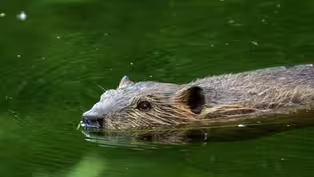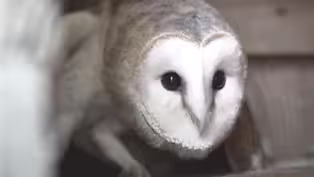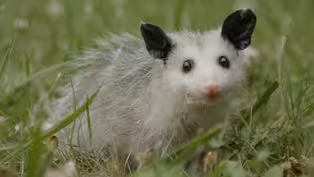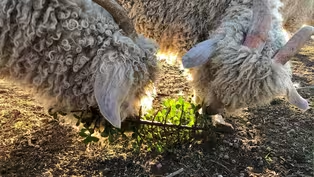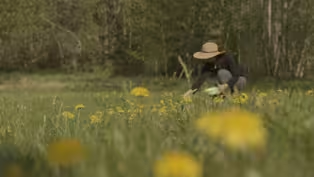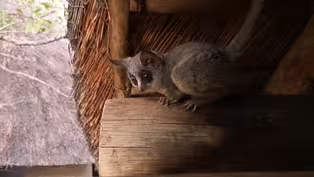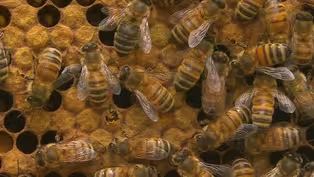
Caught On Camera | Backyard Nature
Special | 3m 40sVideo has Closed Captions
Join wildlife filmmaker Joe Pontecorvo as he views footage from his backyard trail camera.
A bear in your backyard? Join wildlife filmmaker Joe Pontecorvo as he views footage from his backyard trail cameras in Washington State. Learn how easy it is to capture the spectacular wildlife around you.
Problems playing video? | Closed Captioning Feedback
Problems playing video? | Closed Captioning Feedback
Major support for NATURE is provided by The Arnhold Family in memory of Henry and Clarisse Arnhold, Sue and Edgar Wachenheim III, The Fairweather Foundation, Charles Rosenblum, Kathy Chiao and...

Caught On Camera | Backyard Nature
Special | 3m 40sVideo has Closed Captions
A bear in your backyard? Join wildlife filmmaker Joe Pontecorvo as he views footage from his backyard trail cameras in Washington State. Learn how easy it is to capture the spectacular wildlife around you.
Problems playing video? | Closed Captioning Feedback
How to Watch Nature
Nature is available to stream on pbs.org and the free PBS App, available on iPhone, Apple TV, Android TV, Android smartphones, Amazon Fire TV, Amazon Fire Tablet, Roku, Samsung Smart TV, and Vizio.
Buy Now
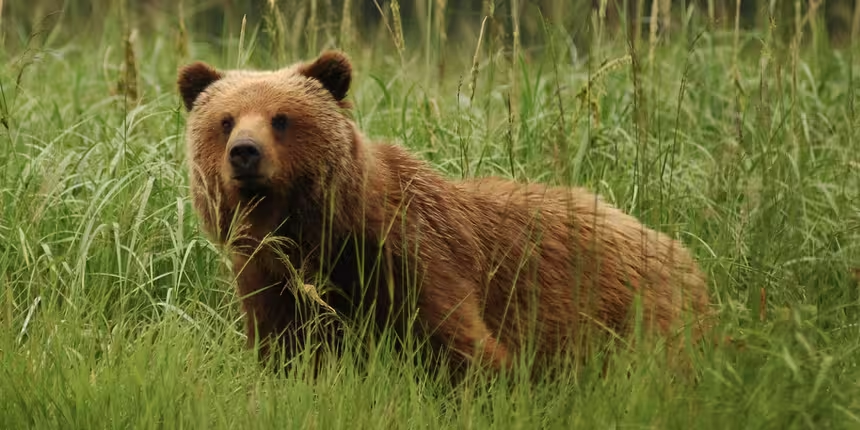
Explore More Ways to Watch
Bring the beauty and wonders of wildlife and natural history into your home with classic NATURE episodes.Providing Support for PBS.org
Learn Moreabout PBS online sponsorshipMore from This Collection
Tag along with filmmakers as they share the beauty of nature while social distancing. Studies show that immersing yourself in nature can benefit your health, so watch the videos below to connect with and appreciate nature.
Busy Beavers | Backyard Nature
Video has Closed Captions
Cinematographer Jeff Hogan takes you into his own backyard to meet his favorite creature. (4m 5s)
The Orphan Owl | Backyard Nature
Video has Closed Captions
Wildlife Filmmaker Ana Salceda made an unlikely companion during the coronavirus pandemic. (8m 12s)
Mythbusting Opossum Facts | Backyard Nature
Video has Closed Captions
Explore the myths and misconceptions surrounding the widely misunderstood opossum. (3m 1s)
The Miracle Plant | Backyard Nature
Video has Closed Captions
This miracle plant helps combat climate change and tastes good in ice cream. (4m 21s)
Video has Closed Captions
Learn how to make dandelion and cat ear tempura with wildlife filmmaker Nim Pontecorvo. (3m 7s)
Bush Baby Tenants| Backyard Nature
Video has Closed Captions
You think your upstairs neighbors are noisy? You haven't met bush babies. (3m 43s)
Keep Calm and... Tend to 20,000 Bees | Backyard Nature
Video has Closed Captions
Immerse yourself in nature with these spring videos. (4m 46s)
Providing Support for PBS.org
Learn Moreabout PBS online sponsorship(rustling) - Hi.
My name is Joe Pontecorvo.
My wife and I are wildlife filmmakers, and when we're not in the field, this is our home, here in Washington State.
But, you know, you don't need to be a professional filmmaker to capture some of the hidden wonders of nature that are all around you.
I'll show you what I mean.
Trail cameras are a great way to find hidden wildlife.
The trick is knowing where to put it.
In general, I look for any kind of animal sign, such as scats or a well-worn trail like this one.
Chances are if one animal uses it, others will as well.
Sometimes, capturing wildlife takes a little time, so try leaving your trail cameras out for a week or so.
All right.
Let's see if we got anything.
Opening up a trail camera card is kinda like opening up a Christmas present.
You never know what you're gonna get.
Oh.
Here's a coyote.
Coyotes really are one of my favorite animals.
They're the most successful large predator in North America.
And despite a brutal campaign of extermination, not only have they survived; they've thrived and expanded their range across the United States.
Today, they're found in every state by Hawaii.
We keep our trail cameras up all year round, and we've discovered an incredible amount of wildlife we never knew we had.
This bobcat's a resident, and you see him frequently on the same trail.
And there he is, carrying a rabbit, I think.
Not all wildlife is secretive, like this black bear.
He regularly visits our apple tree every summer and usually consumes most of our apples.
But most surprising were these elk that regularly visit our backyard.
Now, elk are remarkably adaptable animals, but they're also a migratory species, and we believe one of the reasons they're here is because we live up against a protected area, and these green spaces, such as city parks or even this utility line, they become critical corridors for wildlife to move, so even here, an hour outside of Seattle, you have an enormous amount of wildlife transiting through our backyard.
Some of the natural world remains hidden because animals are elusive, and some of the natural world remains hidden because it unfolds at a different speed.
And, as filmmakers, one of the things we're always trying to do is capture those hidden events, whether it's using high-speed cameras to capture slow motion ... or time-lapse photography to capture the passing of a day or the opening of a flower.
And actually, right here in your back pocket you have a pretty powerful tool that can do basically both of those things.
Most camera phones have slow-motion features and time lapse.
And if you take the time to set it up, you'd be surprised at all the things you can uncover.
I think what I love most about this kind of photography is it reveals a hidden half of nature that you might not normally see in a simple stroll through the woods or even in your own backyard.

- Science and Nature

Explore scientific discoveries on television's most acclaimed science documentary series.

- Science and Nature

Learn how centuries of knowledge helped our ancestors understand the mysteries of space.












Support for PBS provided by:
Major support for NATURE is provided by The Arnhold Family in memory of Henry and Clarisse Arnhold, Sue and Edgar Wachenheim III, The Fairweather Foundation, Charles Rosenblum, Kathy Chiao and...
